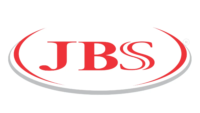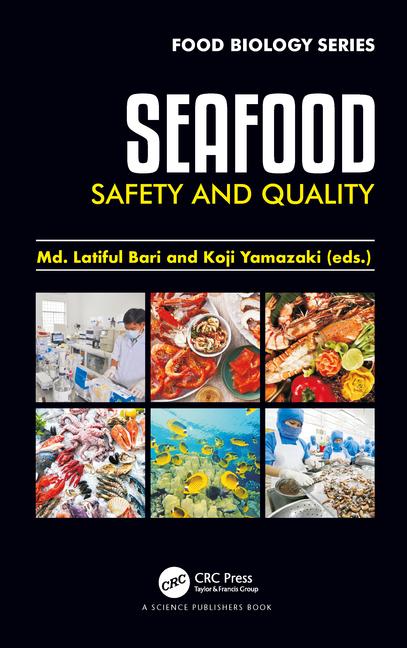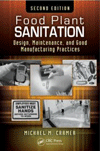Optimizing chemical use to ensure food safety
Using a combination of microbial techniques can provide valuable insight into the total impact of antimicrobial interventions.

Image credit: Gettyimages / urfinguss / iStock / Getty Images Plus
Using a combination of microbial techniques can provide valuable insight into the total impact of antimicrobial interventions.
Foodborne illness continues to pose a major threat to global public health. Despite improvements, animal products remain the top commodity groups associated with bacterial foodborne illness in the US (64%). To mitigate this risk, food manufacturers often utilize antimicrobial interventions, such as peracetic acid, at various points during harvest and fabrication. While peracetic acid (PAA) first gained popularity as a replacement for chlorine in the poultry industry, it has become more widely accepted across multiple sectors of the industry with a broad range of approved usages. Validation studies are considered the gold standard for evaluating the efficacy of antimicrobial interventions, and while this provides great evidence as to its ability to reduce target pathogens it provides little information related to how the overall microbiota is impacted. Our objective for this study was to evaluate the effect of PAA, at various concentrations, on different target pathogens, and on the overall microbiota of inoculated chicken and beef products.
At the onset of the study, two cocktail cultures were prepared for the inoculation of skin-on, bone-in chicken thighs and beef trim. The inoculum for chicken thighs consisted of 5 strains of Salmonella enterica and one strain of Campylobacter jejuni, and the inoculum for beef trim consisted of 5 strains of Salmonella enterica and 7 strains of Shiga-toxin producing Escherichia coli (E. coli). Each piece of meat was inoculated with their respective cocktail culture to achieve a final attachment level between 107 and 105 CFU/mL.
A series of solutions were prepared by mixing tap water and PAA to achieve final concentrations of 800, 400, 200, and 0 ppm PAA. Inoculated chicken thighs and beef trim were hung in a modified spray cabinet and either not treated (NT) or sprayed for 15 or 10 sec, respectively, with one of the following solutions: 0 (tap water), 200, 400, or 800 ppm PAA. After treatment, the meat samples were rinsed, serially diluted, and enumerated for inoculated target pathogens. Aliquots of the remaining rinsates were pelleted and genomic DNA extracted. A sequencing library was prepared with the extracted DNA based on the V4 region of the 16S rRNA gene and sequenced on an Illumina MiSeq. The sequence of the 16S rRNA gene and its hypervariable regions are known for many organisms, enabling researchers to perform taxonomic classification and characterize the taxonomic diversity present in a microbial community.
Peracetic acid successfully reduced the pathogen load of both Salmonella and Campylobacter of chicken thighs; however, it was much less effective on beef trim, failing to reduce the pathogen levels beyond what was observed after tap water treatment. A rinsing effect was observed when chicken thighs and beef trim were sprayed with tap water.
This effect lowered the level of inoculated pathogens by approximately 0.5 Log CFU/mL without the use of antimicrobials. Therefore, for a PAA treatment to be considered effective it must result in lower pathogen levels than the 0 ppm treatment.
Campylobacter was the most sensitive target pathogen observed in this study. The application of 400 and 800 ppm PAA successfully reduced the levels of Campylobacter by approximately 1 Log CFU/mL on chicken thighs. Peracetic acid treatment was also effective at reducing Salmonella on chicken thighs. However, unlike Campylobacter, only the application of 800 ppm PAA resulted in an effective reduction of Salmonella on chicken thighs (~1 Log CFU/mL). Beef trim presented a greater challenge for PAA. While a rinsing effect was observed for both Salmonella and E. coli, no other treatments were considered effective at reducing the level of either target pathogen.
The increased accessibility to next-generation sequencing (NGS) technologies have provided researchers with a valuable tool to look beyond the traditional, targeted validation studies and evaluate the impact of treatment on the microbial ecosystem as a whole. A large portion of the microbial community on raw poultry and beef products consists of Firmicutes, Proteobacteria, and Actinobacteriota. Unsurprisingly, the inoculation that occurs in traditional validation studies has a substantial impact on the microbial composition, making it difficult to identify the true treatment effect on the native microbial population. After inoculation, an obvious shift in the microbial community is observed and Proteobacteria emerges as the predominant taxonomic group. Our results showed that treatment did not impact -diversity (richness or evenness) within the treatment groups, and had minimal impacts on -diversity, meaning treatment had little impact on the overall microbial community of the inoculated meat samples. This lack of treatment effect may be partially explained by the level of inoculation and the inability of 16S rRNA gene sequencing to distinguish between DNA from viable and non-viable cells.
The application of a short-duration PAA spray has been shown to be a viable intervention strategy for the poultry industry but has very little benefits when applied to the surface of beef trim. Variations in efficacy were observed between target pathogen and meat matrices. Peracetic acid was most effective at reducing Campylobacter populations on chicken thighs, while its effectiveness towards Salmonella was largely dependent on the meat matrix it was applied to. The inability of PAA to reduce target pathogens on beef trim suggests that certain properties of the meat matrix may be providing a protective advantage to foodborne pathogens, allowing them to persist on the product after antimicrobial intervention. In the future, NGS technologies will become a valuable tool in assessing the true impact of antimicrobials on pathogen reduction and native product microbiota; however, further refinement will be necessary to unlock its full potential to assess immediate and lasting impacts on the overall microbial community. Using a combined approach, as demonstrated in this study, will enable processors to better optimize chemical usage, improve process control, and maximize shelf life.
Citations
Brown, J. A., Dittoe, D. K., Austin, C. B., Mikkelson, K. B., Hughes, B. & Ricke, S. C., (2024) “Utilizing a Combined Approach to Assess the Antimicrobial Efficacy of Peracetic Acid on Chicken Thighs and Beef Trim”, Meat and Muscle Biology 8(1): 16818, 1-17. doi: https://doi.org/10.22175/mmb.16818
Looking for a reprint of this article?
From high-res PDFs to custom plaques, order your copy today!







